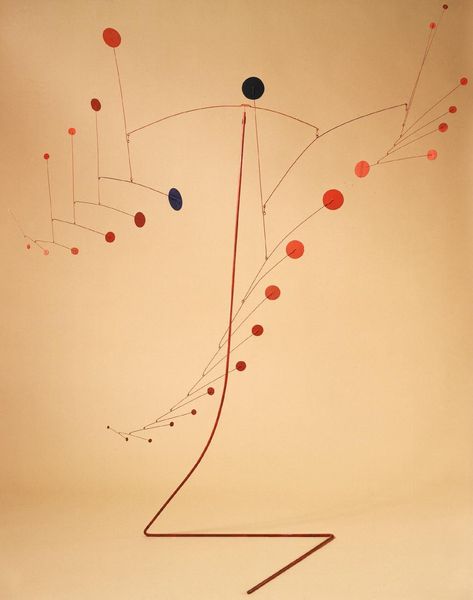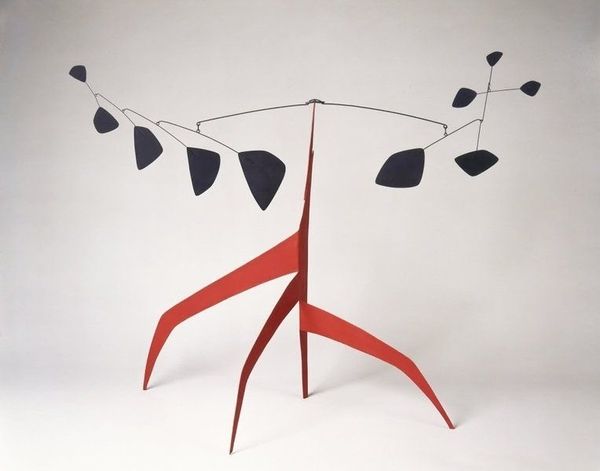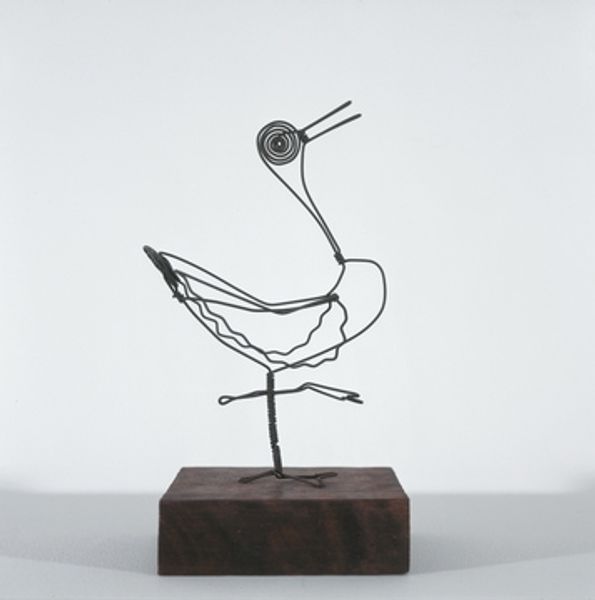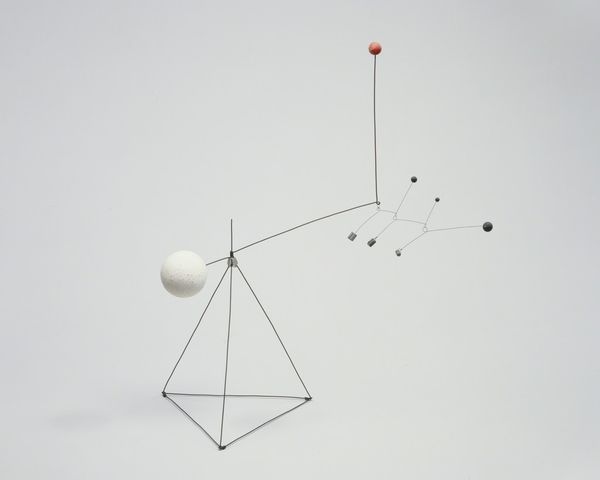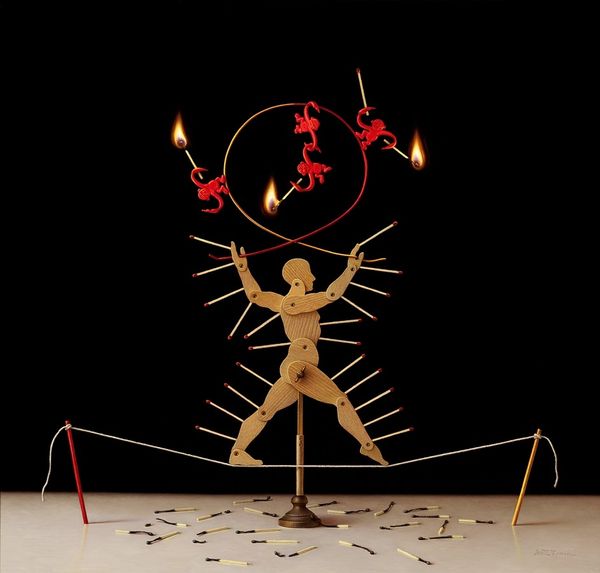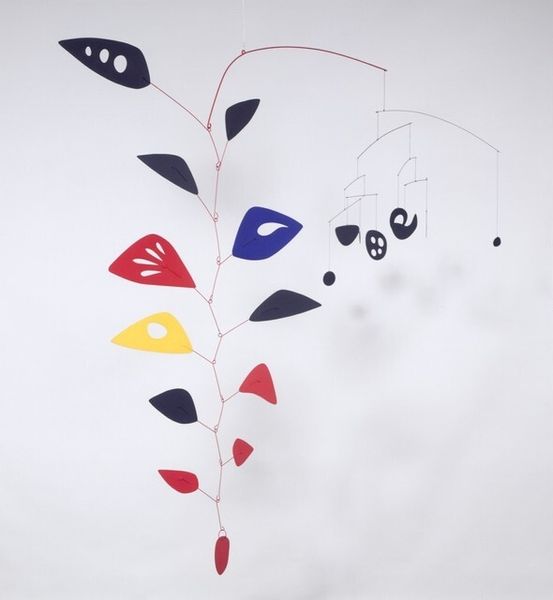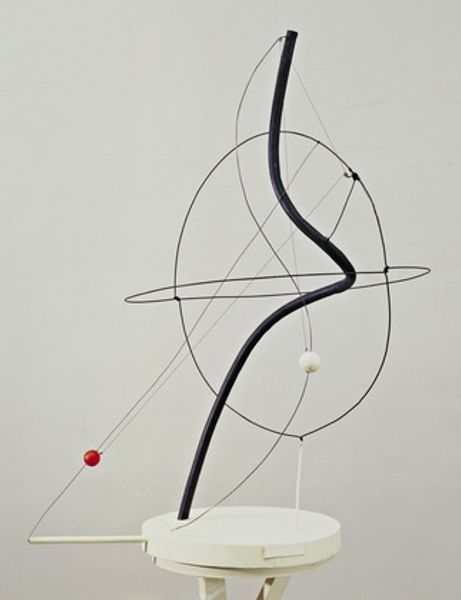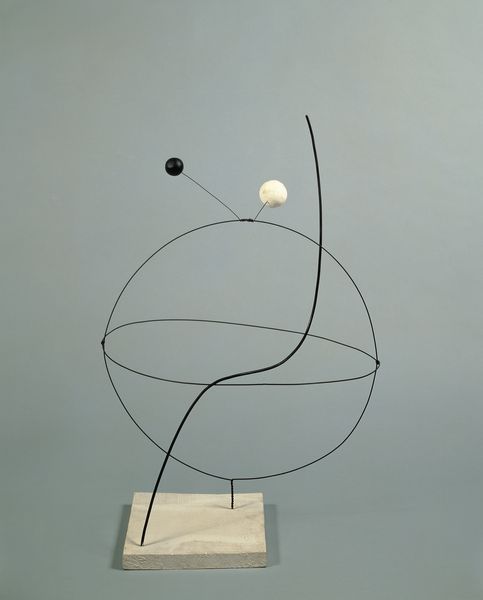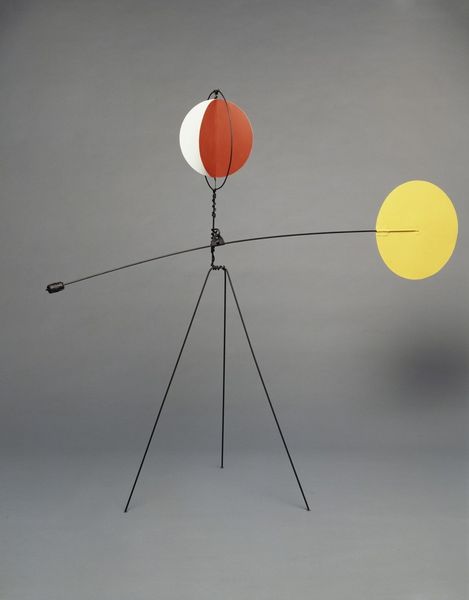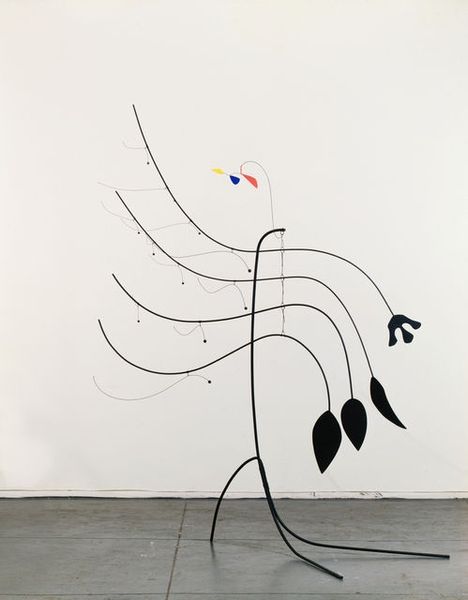
metal, sculpture, mobile
#
abstract-expressionism
#
kinetic-art
#
metal
#
form
#
geometric
#
sculpture
#
mobile
#
abstraction
#
modernism
Copyright: Alexander Calder,Fair Use
Editor: Here we have Alexander Calder's "Un Effet du Japonais," created in 1941. It's a striking sculpture crafted from metal. I find the composition so dynamic; it almost looks like it's dancing. What do you see in this piece? Curator: Focusing on its intrinsic properties, the relationship between line, plane and mass is critical. The stark contrast of red and black emphasizes a visual push and pull. Observe how Calder uses line not to depict, but to *create* space. Do you perceive any hierarchical relationship within the structural composition? Editor: I notice how the red sphere seems to balance the radiating lines on the left, and how this mirrors the balance between the solid black disc and the other set of lines on the right. It feels like a deliberate equilibrium is being created. Is that related to the title, suggesting an effect or influence from Japanese art? Curator: Possibly. Considering Eastern art, with its emphasis on harmony and asymmetry, it’s likely Calder was consciously exploring these concepts through purely formal means. Notice the delicate balance between stability and implied movement inherent in the structure itself. He exploits visual contrast through formal means. Editor: That’s fascinating. So rather than trying to represent something specific, he's focused on the visual interplay of shapes and lines. I initially looked for a deeper meaning, but I can appreciate the formal construction now. Curator: Precisely. In prioritizing form over representation, we confront the essence of abstraction: an emphasis not on what is depicted, but on how it's constructed. This shift changed the course of Western art, enabling it to exist autonomously, like music. Editor: I never thought about sculpture that way before. It really makes you consider the basics: line, shape, balance. Curator: Agreed, and it’s through analyzing the inherent tension of this visual rhetoric, its structural elements, that the essence of Calder's artistry reveals itself. It gives new perspective on understanding.
Comments
No comments
Be the first to comment and join the conversation on the ultimate creative platform.
